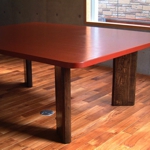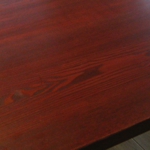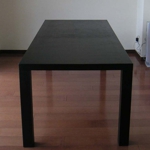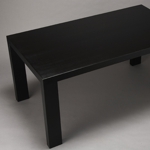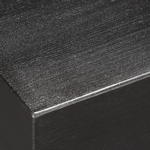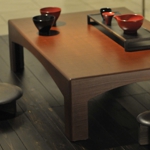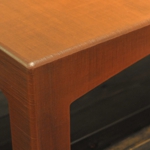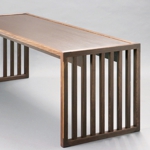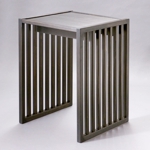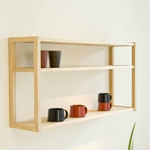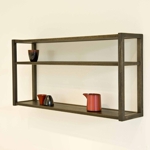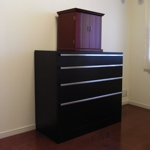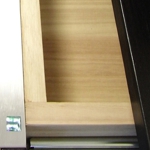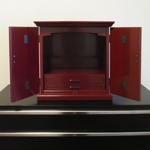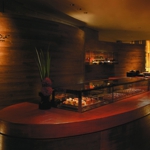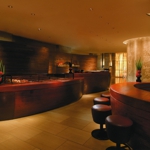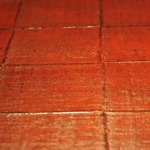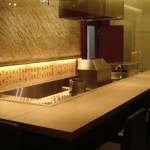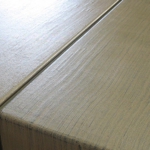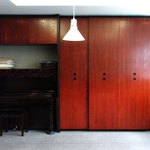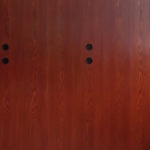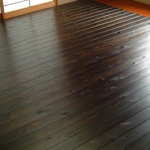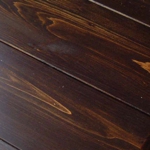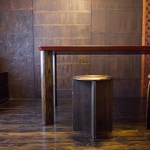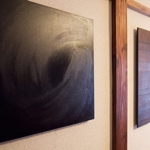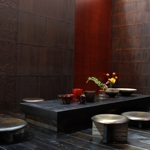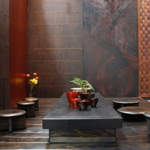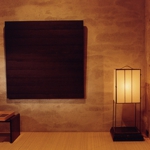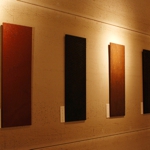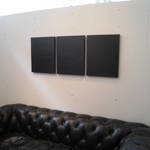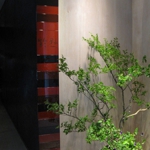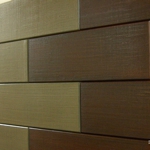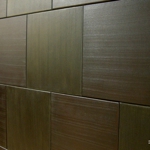The furniture and structure of wood and lacquer

Wajima Kirimoto/ Kirimoto wooden craft workshop has operated as a wooden core manufacturer in Wajima and has a track record of over 80 years.
The second generation, Toshihei invested in plants and equipment in the high-growth era in order to produce lacquered wooden core products such as dining tables of Japanese-style rooms, shelves, folding screens, screens, dining tables, cabinets, and sideboards among other items.
The third generation, Taiichi utilizes the know-how, and is developing a series centering on "light and strong lacquered furniture."
The finish which possesses a rich expression, cannot be damaged easily, even by combining cloth, diatomaceous earth, Japanese paper and lacquer.
The feel of the products are gentle, soft and very pleasant. Kirimoto Wooden Craft Workshop where highly-experienced artisans who have advanced techniques and know-how, can respond to various orders. Please do not hesitate to ask us.
▼ FURNITURE
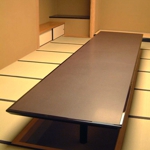
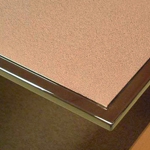
Guest room table at a company (Tokyo)
Size:t2.36×W47.24×L175.59 inch
Technique:HonKataji and sprinkled dry lacquer powder / Color:black
Material:China craft board, HIBA (Thujopsis dolabrata), and Japanese white-bark magnolia
Dining table at a private residence (Tokyo)
Size:t66.92×W78.74×L27.56 inch
■ Table top
Technique: Urushi Nuno-mise, cloth covered table top painted with lacquer
Color: bengara (iron oxide red) / Material: China craft board
■ Table foot
Technique: Fukiurushi, literally wiped urushi
Color:black / Material:Japanese ash
Dining table at a private residence (Tokyo)
Technique:Makiji, uses the mixture of Wajima jinoko
(roasted, crushed, and sifted diatomaceous earth)
Color:black
Chizu Sugi (Chizu cedar) dining table
Size:D33.07×W59×H27.95 inch
Technique:Makiji, uses the mixture of Wajima jinoko(roasted, crushed, and sifted diatomaceous earth)
Color:black / Material:Chizu cedar
Table
Size:D31.10×W47.64×H12.59 inch
Technique:Urushi Nuno-mise, cloth covered and painted with lacquer
Color:bengara (iron oxide red) / Material:Paulownia
Coffee table
Size:D17.72×W47.24×H17.72 inch
■ Table top
Technique:Urushi Honji-shiage, rubbed Jinoko (roasted, crushed, and sifted diatomaceous earth) and lacquer into the wood grain.
Color:urumi (dark brown) / Material:Paulownia
■ Table foot・Frame
Technique:Fukiurushi, literally wiped urushi
Color:urumi (dark brown) / Material:Thujopsis dolabrata
Side table
Size:D17.72×W17.72×H23.62 inch
■ Table top
Technique:Urushi Honji-shiage, rubbed Jinoko (roasted, crushed, and sifted diatomaceous earth) and lacquer into the wood grain.
Color:black / Material:Paulownia
■Table foot・Frame
Technique:Fukiurushi, literally wiped urushi
Color:black / Material:Thujopsis dolabrata
Wall shelf
Size:D7.87×W35.43×H17.72 inch
Technique:【in the left】bees wax finish、【in the right, black】Fukiurushi, literally wiped urushi
Material:Thujopsis dolabrata
Chest at a private residence (Tokyo)
Size:D17.72×W39.37×H35.43 inch
Technique:Urushi Nuno-mise, cloth covered and painted with lacquer / Color:black
Material:【exterior body and front board】China craft board、【interior body and drawers】Paulownia
A family Buddhist altar at a private residence (Tokyo)
Size:D17.72×W39.37×H35.43 inch
Technique:Honkataji / Color:Shu-urumi, reddish vermillion
Material:China craft board and Paulownia
▼ STRUCTURE
Chocolate shop counter (Shinjuku, Tokyo)
Size: L165.35, 149.61, 125.98 inch (three counters)
■ Table top
Technique:Urushi Nuno-mise, cloth covered and painted with lacquer
Color:Reddish vermillion
■ Body
Technique:Hollowed wooden cores of laminations of Paulownia, U-zukuri processing, and Fukiurushi / Color:Reddish vermillion
Dining counter board at a Japanese restaurant (Nagoya, Aichi)
Size:t2.65 x W47.24 x L157.48 inch (divided into three boards)
Technique:Urushi Nuno-mise, cloth covered and painted with lacquer
Color:white / Material:China craft board
Surface of a wall closet door at private residence
(Tokyo)
Technique:Fukiurushi, literally wiped urushi
Color:bengara (iron oxide red)
Material:natural ash craft board with thick pasted finish
Wood flooring at private residence (Chiba)
Size:t0.59x W4.17 inch / one piece of flooring parts
Room size (34.65inch×69.29inch)
Technique:Fukiurushi, literally wiped urushi
Color:black / Material:flooring wood core of Thujopsis dolabrata
Wajima Kirimoto・Urushi Office (Koto-ku, Tokyo)
▶ ABOUT KIRIMOTO
100% design TOKYO "URUSHI no MA"(2006年)
▼ PANELS・TILES
Sample of the lacquer finish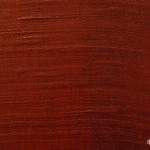 Technique:Urushi Nuno-mise, cloth covered and painted with lacquer Color:Bengara (iron oxide red) and black
Technique:Urushi Nuno-mise, cloth covered and painted with lacquer Color:Bengara (iron oxide red) and black 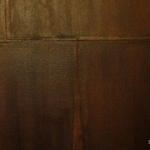 Technique:Urushi Nuno-mise, cloth covered and painted with lacquer and pasted on tile Color:ki-urushi (color of crude lacquer)
Technique:Urushi Nuno-mise, cloth covered and painted with lacquer and pasted on tile Color:ki-urushi (color of crude lacquer) 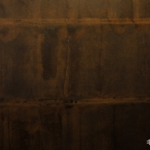 Technique:Urushi washi-bari, coated with Japanese paper and painted with lacquer in a border design. Color:ki-urushi (color of crude lacquer)
Technique:Urushi washi-bari, coated with Japanese paper and painted with lacquer in a border design. Color:ki-urushi (color of crude lacquer) 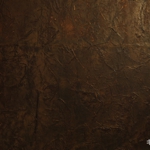 Technique:Urushi Kozo washi-bari, coated with thick and durable Japanese paper and painted with lacquer. Color:ki-urushi (color of crude lacquer)
Technique:Urushi Kozo washi-bari, coated with thick and durable Japanese paper and painted with lacquer. Color:ki-urushi (color of crude lacquer) 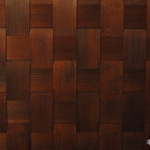 Technique:Urushi Ajiro-ami, painted Ajiro weaved wood with lacquer. Color:ki-urushi (color of crude lacquer)
Technique:Urushi Ajiro-ami, painted Ajiro weaved wood with lacquer. Color:ki-urushi (color of crude lacquer)

